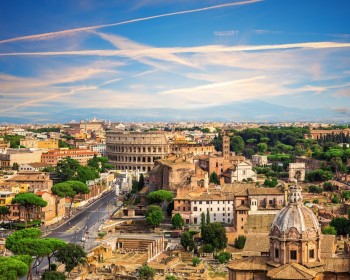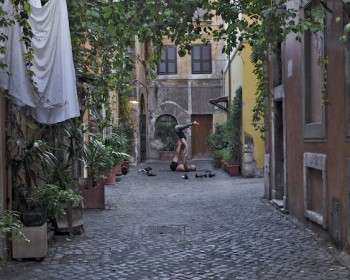If you are interested in ancient Rome history don't miss our Ancient Rome Private Tour.
What types of habitation did exist in ancient Rome?
In ancient Rome there were the Domus, luxurious one-storey houses with a colonnaded courtyard or garden. Then there were the Horti, even more luxurious with a residential complex surrounded by green fields, woods, avenues and statues, and finally the Insule, palaces of up to five storeys where people who were not too rich lived, but also those who were tried on the upper floors, as lifts did not exist.
How were Roman houses built?
Roman houses were built on the same cadastral plan, so when a house collapsed, it was built with the same boundaries but without taking away the old materials, so the Roman soil rose higher and higher, from six to twelve meters and more.
In Roman times, as well as in the Middle Ages, people built in a different way than they do today. In general, the cadastral boundaries remained fixed within the city and new buildings were built on top of older ones, without the debris being carried away. This is why many mosaics of new constructions were laid over the older ones.
Over the centuries the process was repeated and a vertical section of ancient Roman houses can reveal several layers of mosaics dating from the 1st century BC to the 3rd or 4th century AD.
This is why Roman houses in the capital are six and even twelve meters below ground level at street level.
Rome presented itself as a green city, the vegetation between public and private gardens, sacred groves and imperial gardens covered as much as a third of the city. At the time, the predominant colors of the dwellings were the red of the bricks of which the insulae were made, as well as the red of the Roman tiled roofs. In contrast to the more yellowish Etruscan tiles, the clay used, and thus the bricks and tiles, were red.
However, towards the center the white of the travertine and marble of which the domus, temples and government buildings were made predominated. Moreover, the roofs of the temples and also of the baths were often covered with copper that oxidized into a beautiful green.
For
What facilities were there in Roman homes?
For the Romans, most of the furniture consisted of beds. While the poor had for a bed a brick bed set against the wall, the rich had a series of beds on which they not only slept, but also ate, wrote and received.
The lighting in the Roman house left much to be desired, not because there were no windows to light and ventilate the rooms, but because the windows of Roman houses often lacked the lapis specularis, a thin sheet of glass or mica, fragments of which have not even been found in the domus signorili in Ostia.
Just as it is wrong to think that the insula enjoyed a central heating system, so it is false to believe that in Roman homes there was the convenience of running water at one's disposal.
In fact, we must not forget that the supply of water at state expense was conceived from the beginning as a public service, ad usum populi, for the benefit of the community and not of private interest.











